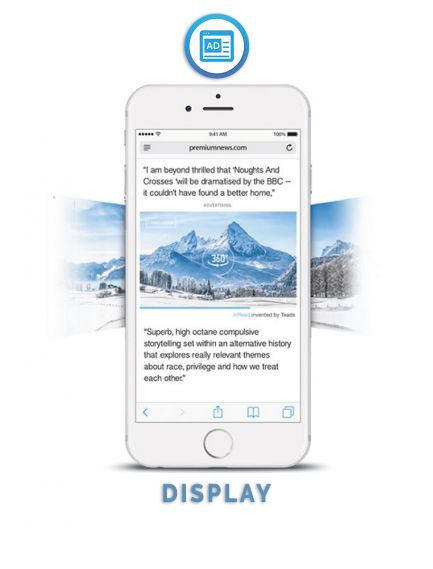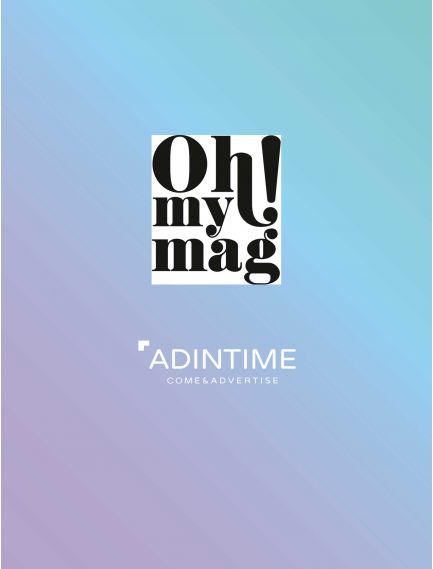If you are looking for a good way to positively impact your target audience while ensuring your visibility on the web, you need powerful and effective means of communication. Display advertising fulfils these criteria and is becoming increasingly effective over time.
Summary: What is a display ad?
- Definition of a display ad
- How can display advertising be effective?
- How does display advertising work?
- What are the display advertising formats?
- How much does a display ad cost?
- Examples of display advertising
Definition of a display ad
A digital display, otherwise known as a "display", is a format for advertising space on the web. Display advertising is becoming an increasingly important part of the advertising market and will be worth no less than €1,165 million and €820 million in France in the first half of 2022. Like billboards, this advertising format is made up of a graphic element that can be an image, a GIF or a video. Its primary objective is to create visibility for a brand, product or service.
In addition to being a very popular format on the Internet, display advertising is also a very effective communication medium: this format allows the advertiser to meet the vast majority of its marketing objectives (acquisition, retargeting, awareness, etc.), particularly thanks to its eye-catching design. Its effectiveness also lies in its great targeting capacity. Indeed, it allows targeting the prospects most interested in the products or services sold by the advertiser. With display advertising, it is also possible to choose the sites that display the ad, the localities and other precise demographic parameters such as
- Age
- Gender
- Parental status
All of these features are ideal for increasing a company's conversion rate or driving traffic to the advertiser's website. It is also easy to measure the effectiveness of a display campaign thanks to performance monitoring tools.
>>> Discover our display advertising offers
How does display advertising work?
How to reach your target with display advertising:
For a digital campaign to be optimised, it must reach its target. And to reach a target, you need to know it, to have information about it. There are several techniques to achieve this, such as the collection of personal data during navigation, via cookies.
When cookies are present on a web page, a pop-up window appears asking to accept or refuse this collection of personal data. But in concrete terms, what information is collected?
Cookies can collect information about the language you use on the web, your age range, your location or your search history. Useful information for targeting your advertising.
Another way to reach your target group with a digital campaign is through programmatic display. In this case, the targeting is not done by collecting personal data of the Internet user, but by targeting keywords.
It is by analysing keywords typed into search engines and sites that programmatic display will automatically target internet users. In short, programmatic display is an automated media buying model, which enables real-time targeting of internet users to deliver the right ad at the right time.
>>> How to advertise in the RGPD era? ?
How to buy display advertising
Display advertising can be set up by a professional, such as an advertising agency, or by the advertiser itself from a dedicated platform. It is during this purchase phase that the company can establish the various parameters of its campaign, such as its duration, the method of payment, the targeting, etc.
In addition, once the advertising space has been chosen and purchased, the banner must be created and optimised in relation to the marketing campaign. The advertising banner can be designed either by the advertising agency or by the company itself. It is important to integrate distinctive elements of the company's graphic charter and its logo.
The next step consists of targeting, more precisely to seek out prospects via their centres of interest for example. The objective of display advertising is therefore, among other things, to find these prospects on sites or platforms that are "related" to the advertiser's activity.
Finally, the advertiser must pay for the display advertising. The price is proportional to the performance of the display campaign. Depending on the type of advertising, the company can decide on the method of payment between CPC, CPM, CPL, CPA (see their definitions below in this article).
What are the formats of display advertising?
Display advertising can be delivered on different platforms such as tablets, mobile phones and computers. Therefore, display advertising can take several formats to suit each platform.
There is the banner format:
- The medium rectangle (300×250 px): this is the standard and most used format, it is usually found on the side of web pages.
- The large rectangle (336×280 px): this format is ideal for better visibility, especially thanks to the larger spaces (it is not available on mobile versions of sites).
The wrap: one of the most profitable formats, it completely frames the chosen website.
- The Leaderboard (728×90 px): a website header format, this is the most effective format for acquisition campaigns.
- The wide-angle or half-page (300×600 px): this is the best format for acquiring visibility.
- The large banner for mobiles (320×100 px): a double space in height.
There are also other more recent formats:
- The 3D display: by clicking or hovering the mouse cursor over the ad, the banner expands and offers an innovative 3D experience.
- Creation Expand: this format has the ability to expand beyond its initial imposed limits.
- The Lightbox: this display banner, as it expands, displays a large insert that takes over the content of the web page, in the same way as a pop-up.
- The interstitial: similar to the pop-up format, this is a format that is placed above the content of the page.
IAB formats in display
The IAB (Interactive Advertising Bureau) is an association of several professionals of the digital advertising sector. This organization aims to facilitate the development of online advertising. The IAB fulfills these objectives thanks to :
- the implementation of advertising standards / charters
- the deployment of studies on digital advertising
- organizing events
The IAB formats are display advertising formats with defined dimensional standards and correspond to digital advertising formats that have already proven their effectiveness.
Here are the different IAB advertising formats:
- 300x300px (computer) 320x320px (tablet) 310x310px (mobile)
- 300x600px (computer) 320x640px (tablet) 310x620px (mobile)
- 300x900px (computer) 320x960px (tablet)
- 160x640px (computer) 230x920px (tablet)
- 1800x450px (computer) 900x225px (tablet)
- 2840x1420px (computer) 900x450px (tablet) 360x180px (mobile)
- 768x96px (computer) 720x90 (tablet)
- 1800x180px (computer)
A successful digital campaign is one that is in line with digital developments. This is why it is important and even highly recommended to use a large number of different display formats to adapt to all devices and platforms. Indeed, a digital campaign will have less impact and reach if it is limited to one format and/or platform.
>>> Which display ad to use to achieve your goals?
How much does a display ad cost?
There are different calculations for calculating a proportional remuneration for ad impressions.
- Cost per click (CPC): If the advertiser chooses the cost per click, he will only pay the amount generated by the number of clicks. In other words, if no user clicks on the ad, no payment will be necessary.
- Cost per action (CPA): similar to CPC, here the advertiser only pays if an action, such as a purchase, has been carried out by an Internet user.
- Cost per thousand (CPM): here, the price of online advertising space is calculated for a total of 1,000 advertisements displayed.
- Cost per lead (CPL): a "lead" is otherwise known as a prospect. Here, the CPL is an amount that the advertiser pays for each lead that it will obtain thanks to the advertising spot. This lead acquisition can take the form of a subscription to the advertiser's newsletter or via a contact form that the Internet user fills in.
Below is a graph of the average costs of digital advertising!


Examples of display advertising
Here are some examples of display ads that you can find on many popular websites such as Le Figaro or jeuxvideos.com :
In this example of the Figaro website, we can see the advertising insert at the bottom right, in a so-called paved format, with one spot per Playstation.

In this example the advert is on the right in portrait format with an advert for Nintendo.








 Top 30 best ads musics
Top 30 best ads musics
 The influence of advertising on purchasing behavior
The influence of advertising on purchasing behavior
 Top 30 best ads 2021 in France
Top 30 best ads 2021 in France
 Top of the most listened podcasts in France
Top of the most listened podcasts in France
 This Year Marketing Calendar
This Year Marketing Calendar
 Facebook Ads Library: The ultimate guide to winning campaigns
Facebook Ads Library: The ultimate guide to winning campaigns
 How to prepare your advertising campaigns for Christmas?
How to prepare your advertising campaigns for Christmas?
 The top 20 ad films of the year
The top 20 ad films of the year
 Example of a unique selling proposition
Example of a unique selling proposition
 Advertising storyboard: how to structure your campaigns
Advertising storyboard: how to structure your campaigns








